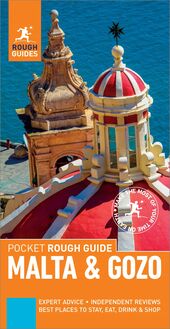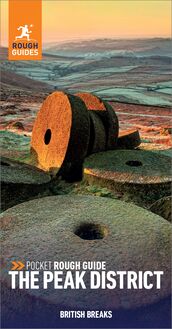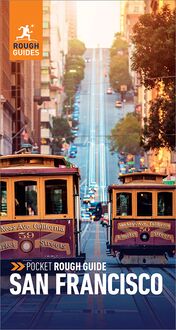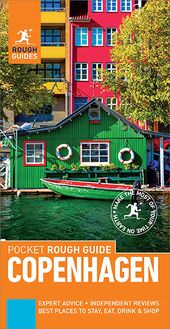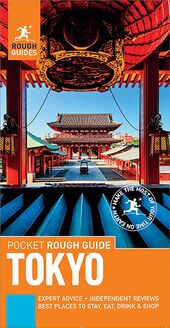-
 Univers
Univers
-
 Ebooks
Ebooks
-
 Livres audio
Livres audio
-
 Presse
Presse
-
 Podcasts
Podcasts
-
 BD
BD
-
 Documents
Documents
-
- Cours
- Révisions
- Ressources pédagogiques
- Sciences de l’éducation
- Manuels scolaires
- Langues
- Travaux de classe
- Annales de BEP
- Etudes supérieures
- Maternelle et primaire
- Fiches de lecture
- Orientation scolaire
- Méthodologie
- Corrigés de devoir
- Annales d’examens et concours
- Annales du bac
- Annales du brevet
- Rapports de stage
La lecture à portée de main
Vous pourrez modifier la taille du texte de cet ouvrage
Découvre YouScribe en t'inscrivant gratuitement
Je m'inscrisPocket Rough Guide British Breaks The Peak District (Travel Guide eBook) , livre ebook
Découvre YouScribe en t'inscrivant gratuitement
Je m'inscrisEn savoir plus
Vous pourrez modifier la taille du texte de cet ouvrage
En savoir plus

Description
Discover the best of The Peak District with this compact, practical, entertaining Pocket Rough Guide. This slim, trim treasure trove of trustworthy travel information is ideal for travellers on short trips, and covers all the key sights such as Buxton, Castleton and Bakewell, restaurants, shops, cafes and bars, plus inspired ideas for day-trips, with honest independent recommendations from expert authors.
The Pocket Rough Guide THE PEAK DISTRICT covers: Buxton, Bakewell, Castleton, Bollington, Hathersage and Derwent Reservoir.
Inside this travel guide you will find:
RECOMMENDATIONS FOR EVERY TYPE OF TRAVELLER
Experiences selected for every kind of trip to The Peak District, from off-the-beaten-track adventures near Hathersage to family activities in child-friendly places, like Matlock Bath or chilled-out breaks in popular tourist areas, like Bakewell.
INCISIVE AREA-BY-AREA OVERVIEWS
Covering Padley Gorge, the Nine Ladies Stone Circle and more, the practical Places section provides all you need to know about must-see sights and the best places to eat, drink, sleep and shop.
TIME-SAVING ITINERARIES
The routes suggested by Rough Guides' expert writers cover top attractions like the Peak Cavern and Thor's Cave, and hidden gems like Ladybower Reservoir and Mam Tor.
DAY-TRIPS
Venture further afield to Bakewell or Chatsworth House. This tells you why to go, how to get there, and what to see when you arrive.
HONEST INDEPENDENT REVIEWS
Written with Rough Guides' trademark blend of humour, honesty and expertise, our expert writers will help you make the most of your trip to The Peak District.
COMPACT FORMAT
Packed with pertinent practical information, this is a convenient companion when you're out and about exploring the Heights of Abraham.
HANDY PULL-OUT MAP
With every major sight and listing highlighted, the pull-out map makes on-the-ground navigation easy.
ATTRACTIVE USER-FRIENDLY DESIGN
Features fresh magazine-style layout, inspirational colour photography and colour-coded maps throughout.
PRACTICAL TRAVEL TIPS
Includes invaluable background information on how to get to The Peak District, getting around, health guidance, tourist information, festivals and events, plus an A-Z directory and a handy language section and glossary.
Sujets
Informations
| Publié par | Apa Publications |
| Date de parution | 15 octobre 2022 |
| Nombre de lectures | 0 |
| EAN13 | 9781839058820 |
| Langue | English |
| Poids de l'ouvrage | 18 Mo |
Informations légales : prix de location à la page 0,0400€. Cette information est donnée uniquement à titre indicatif conformément à la législation en vigueur.
Extrait
CONTENTS Introduction When To Visit What’s New Things not to miss Places Castleton and around Hathersage and around Buxton and around Bakewell and around South West Peak and around White Peak South and around Matlock and around Further Afield Accommodation Essentials Arrival Getting around Directory A–Z Festivals and events Chronology Maps and small print
THE PEAK DISTRICT
As England’s first national park, the Peak District is now over 70 years old and an incredibly popular place to visit. Although surrounded by many major towns and cities, it is possible to quickly disappear into remote rural areas and get away from it all, with amazingly scenic countryside, a wide variety of attractions, and plenty of places to stay and eat out. Hikers, cyclists, climbers and cavers are spoilt for choice, with endless opportunities to enjoy the great outdoors. The moors of the northern Dark Peak are home to the iconic edges and tors, while the landscape of the White Peak in the south contains peaceful winding dales and gorges, surprising abrupt limestone peaks and rolling grassy hills. The park is also crammed with everything from historic homes and gardens, ancient heritage and charming villages to adventurous cave visits, watersports and theme parks.
Ashopton Viaduct, Ladybower Resevoir
Shutterstock
The Peak District was established in 1951, but the area has been receiving visitors for thousands of years. Places like Buxton were popular even as far back as the Romans, after they discovered the mineral-rich geothermal spring waters that lead to its fame as a spa town. With increasing visitor numbers in Victorian times aided by the spread of railways and the easy access they provided, alongside a growing interest in recreation in the countryside, the development of the area went hand in hand with the progress made by the movement for public access.
History is everywhere. From high up on the tops at Arbor Low’s Neolithic stone circle to Kinder Scout, the area’s highest peak and site of the Mass Trespass, right down to Derwent Reservoir, where the RAF Dambusters trained for missions, and the mills at Cressbrook and Litton, where fortunes were made but working practices were grim. The rich land here provided good farming as far back as 4000 years ago, especially in the southern limestone country where the grazing was better, and farmland still makes up 90% of the park. More recently it was the rivers powering the mills during the industrial revolution and mineral-rich waters in Buxton and Matlock Bath that spurred the growth of both as spa towns.
Even today, quarrying is a major industry inside the national park, such as near Hope and just outside the boundary near Buxton, apparently one reason this town was left outside the national park when it was created. The ready availability of limestone and sandstone also made them a natural choice to build the attractive houses, churches and bridges found in many villages and towns, and the 26,000 miles of dry stone walls marking out the massive number of fields.
As in the past, one of the biggest reason to visit the Peak District is for walking. There is an immense network of public footpaths totalling over 1600 miles across the moors, along the famous edges, down valleys and gorges, exploring all the landmark hills and eye-catching tors, as well as on many designated trails and long-distance paths such as Limestone Way, the Peak District Boundary Way, White Peak Way, Gritstone Trail, and the biggest of them all, the Pennine Way, which starts in Edale.
Outdoor enthusiasts can also enjoy a multitude of other activities including cycling, mountain biking, fell running, climbing, golf, angling, caving, paragliding and even weaseling… a local speciality and a fun way to explore the rocky features of the area. Watersports range from canoeing and paddle boarding to sailing and wild swimming. Families will find stacks to do, from the numerous fun attractions around Matlock, farms and wildlife parks, easy strolls or bike rides, dipping into the history of the area, or even just messing about in the river at Burbage Brook or in Dovedale.
When it rains, there are plenty of wet weather options such as exploring the caves near Castleton and Buxton, a day at a spa, museums like the Lead Mining Museum in Matlock and Bakewell Old House Museum, sampling gin or whiskey on a distillery tour, and an array of shopping in Buxton. The area is also rich in heritage, with many old buildings now used as pubs, hotels and restaurants, as well as grand homes to visit like Haddon Hall, Ilam Estate, Lyme Park and Chatsworth; the latter being one of the finest country estates in Britain.
Haddon Hall
Shutterstock
The national park has no shortage of good dining venues. With pubs and cafés aplenty, casual meals are easy to find. Look a little deeper and you’ll find excellent fine dining in places such as Fischer’s Baslow Hall, The George in Alstonefield and The Peacock at Rowsley. For something more spicy, you’re well catered for with Afro-Caribbean food at Stella’s Kitchen near Eyam, the quirky Chakra Lounge café in Buxton, and the Indian/Pakistani Sahil Street Food in Bakewell. If you’re staying near Buxton, you can find everything from Greek to Japanese, Thai to Mexican, and French to Spanish cuisine.
With around a third of the UK’s population living less than an hour away, a massive number of people visit the national park for leisure, but the average stay is incredibly short: less than four hours! If you’re staying longer than that there’s such a depth of attractions, it is tempting to tick lots of things off, but the best way to get the most out of the area is to pick a small amount to do and take it slow. Enjoy the area around where you’re staying; choose walks to appreciate the natural beauty; linger in the village or town after lunch to take in its lesser-known sights; head for the more out-of-the-way places and you’ll be rewarded with a very different and more special experience of the area. As well as many worthwhile tourist hot spots, it is possible to find yourself plenty of peace and quiet, with some magical and spectacular scenery, in what is still one of Britain’s best loved national parks.
In 1951, the hills and dales of the Peak District, at the southern tip of the Pennine range, became Britain’s first National Park. Wedged between Derby, Manchester and Sheffield, it is effectively the back garden for the fifteen million people who live within an hour’s drive of its boundaries, though somehow it accommodates the huge influx with minimum fuss.
Landscapes in the Peak District come in two forms. The brooding high moorland tops of Dark Peak, to the east of Manchester, take their name from the underlying gritstone, known as millstone grit for its former use – a function commemorated in the millstones demarcating the park boundary. Windswept, mist-shrouded and inhospitable, the flat tops of these peaks are nevertheless a firm favourite with walkers on the Pennine Way, which meanders north from the tiny village of Edale to the Scottish border. Altogether more forgiving, the southern limestone hills of White Peak have been eroded into deep forested dales populated by small stone villages and often threaded by walking trails, some of which follow former rail routes. The limestone is riddled with complex cave systems around Castleton and on the periphery of Buxton, a pleasant former spa town lying just outside the park’s boundaries. Elsewhere, one of the country’s most distinctive manorial piles, Chatsworth House, stands near Bakewell, a town famed locally not just for its cakes but also for its well-dressing, a most likely pagan ritual of thanksgiving for the village supply of fresh water that takes place in about thirty local villages each summer. The well-dressing season starts in May and continues through to mid-September.
Sunrise at the Great Ridge
Shutterstock
As for a base, Buxton is perhaps your best bet, though if you’re after some hiking and cycling you’ll probably prefer one of the area’s villages – Edale or Castlevton will do very nicely.
When To Visit
The prime time to visit the Peak District is in the summer from June through to August, with the weather offering the best chance of enjoying the countryside to the full. The panoramic views from on top of the hills and rocky edges are at their finest in the sunniest months, while the moors look fantastic when the heather is in full bloom from mid-August into September. Saying that, virtually any part of the year has something going for it, and in any weather, which is just as well as rain can be a part of any British holiday.
If you can visit outside the summer holidays and preferably mid-week, you’ll find places less crowded and much calmer. Spring is particularly nice and if you catch a sunny day you can find some beauty spots almost deserted compared to the numbers they attract in the summer, and it is still pleasant enough temperatures for hiking, etc. When the leaves appear on the trees and the spring flowers start blooming in the woods, meadows and gardens, the beauty of the Peak District really kicks in. Accommodation prices can also be significantly less in the quieter seasons compared to peak times in summer.
Autumn has its own appeal, with the woodlands and valleys showing off their changing colours, usually with the decent weather and mild temperatures continuing. Even the cold, grey days of winter are still good for enjoying hillwalking. There’s something about the bleak moors that look even more atmospheric in the rain and fog, and when the twisted, gnarled rock formations of the tors appear out of the mist, it adds an air of mystery to them. There’s also nothing better than returning after a day out in the wilds and settling into a country pub or cosy café to warm up in front of an open fire with a pint or a slab of cake.
What’s New
After a life spent successfully campaigning for public access to the cou
-
 Univers
Univers
-
 Ebooks
Ebooks
-
 Livres audio
Livres audio
-
 Presse
Presse
-
 Podcasts
Podcasts
-
 BD
BD
-
 Documents
Documents
-
Jeunesse
-
Littérature
-
Ressources professionnelles
-
Santé et bien-être
-
Savoirs
-
Education
-
Loisirs et hobbies
-
Art, musique et cinéma
-
Actualité et débat de société
-
Jeunesse
-
Littérature
-
Ressources professionnelles
-
Santé et bien-être
-
Savoirs
-
Education
-
Loisirs et hobbies
-
Art, musique et cinéma
-
Actualité et débat de société
-
Actualités
-
Lifestyle
-
Presse jeunesse
-
Presse professionnelle
-
Pratique
-
Presse sportive
-
Presse internationale
-
Culture & Médias
-
Action et Aventures
-
Science-fiction et Fantasy
-
Société
-
Jeunesse
-
Littérature
-
Ressources professionnelles
-
Santé et bien-être
-
Savoirs
-
Education
-
Loisirs et hobbies
-
Art, musique et cinéma
-
Actualité et débat de société
- Cours
- Révisions
- Ressources pédagogiques
- Sciences de l’éducation
- Manuels scolaires
- Langues
- Travaux de classe
- Annales de BEP
- Etudes supérieures
- Maternelle et primaire
- Fiches de lecture
- Orientation scolaire
- Méthodologie
- Corrigés de devoir
- Annales d’examens et concours
- Annales du bac
- Annales du brevet
- Rapports de stage



